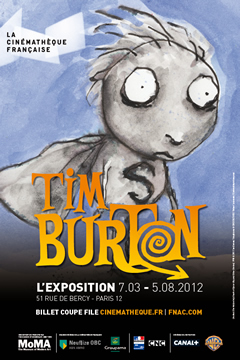Yesterday, Google flipped a switched on its Google Apps policy — starting with December 7th, 2012, Google Apps will no longer be free! The change is for Google Apps for Business and it effectively ends the ability to create free accounts for groups of 10 or fewer users (here’s Google’s announcement). Individuals could still have a personal account, but businesses will have to pay $50 per user, per year… That is NEW business customers will have to pay — if you had a business account prior to the announcement, you get to keep it on the same terms you’ve signed up for — free! But all new Google Apps business customers from this point forward will pay to play. There’s a lot of chatter about whether Google’s customers will pay or walk away, but I’m interested in the behavioral economics analysis of this change. Allow me describe a few experiments on anchoring — the psychological phenomena where individuals get attached to the first result they witness and base their subsequent decisions on that original priming. The experiments I’m going to describe come from two books: Dan Ariely’s “Predictably Irrational, Revised and Expanded Edition: The Hidden Forces That Shape Our Decisions”…
Cultural Differences
Conceptual Design, Cultural Bias, Cultural Differences, Pipsqueak Articles
Same Desire, Cultural Shift in Solution
by Olga Werby •

Over time, some desires have stayed constant: an aversion to pain, a wish for health, a longing to be loved, and a craving for wealth, power, and youth. But desires are susceptible to cultural shifts, and so they shift with the whim of fashion: the need to be thin, the hope to fit the norms of current beauty, the yearning for popularity, an aspiration for fame. Each generation comes up with solutions for their desired that are based in the cultural soup that nourished them. What is a cultural soup? Well, it’s a heady mixture of the following: anxiety — each generation has their own issues that they loose sleep over. In addition to the ones that their parents experienced, each generation can choose and pick and invent their own worries. affordances — affordances are available actions that are mired in context and situation. As context changes, affordances evolve. Each generation sees a unique subset of problem solutions. emotional design — each generation is stirred by issues and fashion that are uniquely their own. Emotional design is by definition tied to a particular group of people, be they joined in time, cause, or geography. Social value, user satisfaction, and emotional…
Background Knowledge, Cultural Differences, Ethnographic & User Data, Interaction Design, Pipsqueak Articles, Product Design Strategy
Babies, Siri, and Voice-activated Controls
by Olga Werby •
The new generation will grow up with Siri: What will this mean to their expectations of how devices should/could work? What are the implications to product design and interaction design?
Background Knowledge, Conceptual Design, Cultural Bias, Cultural Differences, Errors, Language, Pipsqueak Articles, Product Design Strategy, Scaffolding
Words, Language, Influence, & Design
by Olga Werby •

I’ve been thinking a lot lately about the power of language. Sure, there have been a lot of news relating to language (election, after all, is only a few months away): legitimate rape is one example of powerful words/phrases in the news. But I would like to briefly explore how words and language can influence the design and use of a product. Language Development It might be interesting to start really early (or to look to unusual cases of individuals without language). The following program by RadioLab does a wonderful job of introducing language and the development of comprehension: Words that Change the World. This half-hour audio show presents the work of Susan Schaller, Charles Fernyhough, Elizabeth Spelke, and James Shapiro. Susan describes a case of a deaf 27 year old man who was never taught language and his journey to comprehension. Charles describes an experiment where babies, kids, and rats are asked to find items in a blank room after a brief disorientation. He discovers that language is essential to linking concepts in our brain. Elizabeth explores the benefits of language farther. And James, a Shakespeare scholar at Columbia University, talks about the use of language to communicate complex…
Conceptual Design, Cultural Differences, Interaction Design, Interface Design, Pipsqueak Articles, Product Design Strategy
Design and the Olympic Games
by Olga Werby •

The Olympic Games are coming to a close and there are some interesting design decisions that seem worth mentioning. But let’s start with a cursory set of design requirements: safety, transportation, visibility and observability of events, entertainment, fairness, cultural sensitivity and appropriateness, and so much more. As with all design problems, divide and concur is a good approach: who are the audiences; what are their needs; what are the time, budget, and personal resources of the project; and what are the considerations (goals) of the sponsoring country. These are the basics of product design. From these variables, we can set priorities and deduce probabilities of errors and failures and how to accommodate them with design. Clearly, this is too much to cover in one blog, but here are a few thoughts… Safety There are many safety concerns in staging big, multinational events. Let’s first consider the different groups of individuals: safety for the participants, organizers, audience, supporting staff. We can break this down even more (by country, by sex, by religion, by location, by celebrity, etc.), but these are the large categories. It’s important to consider the safety for each group separately and provide supports as necessary. There are different…
Anchoring Errors, Background Knowledge, Conceptual Design, Cultural Bias, Cultural Differences, Mental Model Traps, Pipsqueak Articles, Product Design Strategy, Scaffolding
Designing an Optimum Nudge
by Olga Werby •

I’m sitting by a window looking out at a rainy Paris street, thinking of cultural differences between Paris and San Francisco, taking advantage of bad weather to do some writing. Over two decades ago, I did some ethnographic research a Exploratorium, looking at how different visitors interacted with the museum’s hands-on exhibits. I was looking for ways to improve the visitors’ experience, raise understanding of the phenomena they were observing. What I saw was different ways in which visitors experienced failure: p-prims that got in a way; folksy wisdom that caused confusion; lack of affordances that led to bottlenecks; permission giving that set up strange expectations; etc. The results of this study turned into a Master Thesis for UC Berkeley. Now, I would like to explore some of the ideas that surfaced during my Exploratorium research and apply them to design of nudging — carefully crafted affordances and perceptual cues that manipulated users into acting a certain way while maintaining the illusion of freedom of action. Let me start with a bit of history — a quick summary of some of the results of Exploratorium study. Permission Giving Two decades ago, “hands-on” exhibits were still novel in the museum world.…
Anchoring Errors, Background Knowledge, Background Knowledge Errors, Cognitive Blindness, Cultural Bias, Cultural Differences, Diagnostic Errors, Errors, Ethnographic & User Data, Group Decision Errors, Mental Model Traps, Mirroring Errors, Misapplication of Problem Solving Strategies, Pipsqueak Articles, Product Design Strategy, Users
Cultural Barriers to Success
by Olga Werby •

Man-made Disasters in a Wake of Tsunami This month, The Fukushima Nuclear Accident Independent Investigation Commission issued its final report on the disaster: It was man-made! Here’s a quote from the report: What must be admitted — very painfully — is that this was a disaster “Made in Japan.” Its fundamental causes are to be found in the ingrained conventions of Japanese culture: our reflexive obedience; our reluctance to question authority; our devotion to ‘sticking with the program”; our groupism; and our insularity. Had other Japanese been in the shoes of those who bear responsibility for this accident, the result may well have been the same. The last sentence is particular insightful — the blame was not rested on the shoulders of a particular individual, as tempting as that might be, or even on the shoulders of some manager. The fault was places on the cultural context in which the incident played out. Museums in Paris We just got back from seeing a Tim Burton exhibit at the La Cinémathèque, in Paris. The content of the exhibit, as one could imagine, is quite wonderful. But there were many, many human failures in making the visit an enjoyable experience. And yes,…
